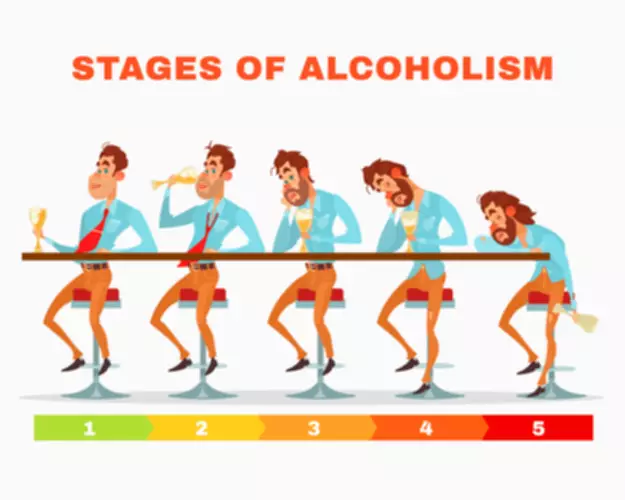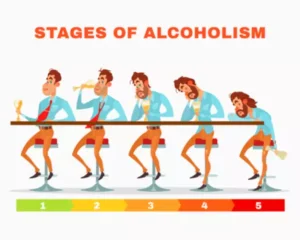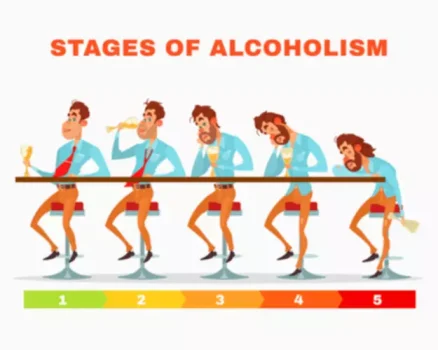
This may be a result of missing too many days of work, habitually showing up late due to frequent hangovers, or even losing their jobs as a result of their addiction. They also have more tolerance, and friends or family who drink with them socially may notice that they are consuming more and more alcohol. At this stage, alcohol is starting to become a major focus in their daily lives. The following are some questions people often ask about drinking alcohol.
Stages of being drunk
- Particularly in regular drinkers, symptoms and the BAC do not necessarily relate to each other, making an accurate measurement beneficial.
- Its effects, both wanted and hazardous, are a result of this depression of the brain’s operations and neural activity.
- Their blood alcohol content (BAC), which measures how much alcohol is in the bloodstream, will be very low at 0.01 to 0.05 percent.
- Usually a man will start to feel tipsy after consuming 2 to 3 alcoholic drinks in an hour.
- At this stage, it is clear that the individual is an alcoholic and needs help.
While you wait, make sure the intoxicated person remains upright and awake. If you believe someone is significantly intoxicated, the first thing to do is to remove any additional alcohol from their immediate surroundings so they can’t continue to drink. If you are concerned about someone with these symptoms, you should seek immediate medical attention. The amount of alcohol consumed is not the only factor in determining BAC. They do not know what is going on and cannot remember what happens, making it very dangerous.

How Does Drinking Progress?
However, they may start to avoid challenging situations to prevent anxiety and hide their distress from others. In fact, the symptoms may even be too mild to detect in a clinical interview with a healthcare provider, as the person may be able to adequately perform memory tests during the interview. At this stage, the person can function normally and exhibits no signs of memory loss, confusion, or cognitive impairment. In 1982, Dr. Barry Reisberg created the Global Deterioration Scale (GDS), which consists of seven stages, to help clinicians categorize the progression of dementia. Dementia is marked by a severe decline in cognitive functions, such as thinking, reasoning, and remembering, to the extent that it interferes with the person’s daily life.

Six Stages Of Alcohol Intoxication
- In this stage, an addicted person becomes preoccupied with using substances again.
- Own Your Limits is a Defense Department (DOD) education campaign, aligned to the Defense Health Agency, for the U.S. military.
- You can overcome alcoholism while living a life of wellness and joy by drinking fewer drinks and following the correct measures.
- Although AA isn’t therapy, individuals can find sponsors to help guide them through sobriety.
- Blood alcohol content (BAC) is the unit used to measure the amount of alcohol in a person’s bloodstream.
- Physical signs of intoxication include blurred vision, loss of balance, slow reaction time, slurred speech, sleepiness, and nausea or vomiting.
Both are reversible, however, if the person abstains from alcohol or quits altogether. Their health problems are becoming an issue, and they may be experiencing cardiovascular issues, liver damage (the beginnings of cirrhosis), and gastrointestinal problems. At this stage, family and friends who try to intervene may be met with defensive behavior or denial.
An Evolving Understanding of Substance Use Disorders
Scaling these risky BAC thresholds is not as difficult as some might think. Because it takes time for Twelve-step program alcohol to have an effect on the body, consuming the large amounts required to reach these BAC levels can occur while the person is still reasonably sober. Sometimes medications may be used in alcohol addiction treatment.

Your Brain on Alcohol
- In the last three phases, the toxin has entered the cell causing internal damage and, hence, destruction to the organ or tissue involved.
- People with alcohol use disorder may not feel drunk at all, even when their BAC is very high.
- You might have a slower reaction time and lowered inhibitions.
- Acknowledge your alcohol trouble, get medical assistance, seek counseling, create a support structure, and maintain life to its fullest.
- Many people refer to alcoholism as a “family disease” because it can have a major impact on all members of the family whether they realize it or not.
- Importantly, positive and negative reinforcement need not be driven solely by the effects of the drugs.
The Centers for Disease Control and Prevention estimates excessive alcohol use causes approximately 88,000 deaths annually in the United States. This stage can be very dangerous and even fatal if a person chokes on their vomit or becomes critically injured. At this stage, a person no longer responds to the things happening around or to them. In this stage, the person can likely still remember their own name and the names of their spouse and children, but they may struggle with recalling their grandchildren’s names. They may be able to eat and use the bathroom without assistance but may need help with tasks such as deciding what to wear.
- You must seek emergency medical treatment for a person who’s showing symptoms of alcohol poisoning.
- In this manner, the body does not permit the toxin within the cell where it could do irreversible harm.
- Some people may feel so “broken” that they almost feel they can no longer experience joy and confidence, or have healthy relationships again.
- Although there are people who have survived at this stage, it’s rare.
Neurobiological Effects of Recovery
When the speed at which alcohol is metabolized is faster than what the human body can consume, an individual develops drunkenness. Although being drunk can feel fun to begin with, it is a sign that alcohol has temporarily changed how the brain functions. Continuing to drink when already feeling drunk can increase a person’s risk of complications. Alcohol tolerance can affect the extent to which a person feels intoxicated. People who frequently drink may feel less drunk than those who do not. People with alcohol use disorder may not feel drunk at all, even when their BAC is very high.
They may experience an increased pain threshold and may not feel the effects of an injury until later. At this stage, those around the individual will likely notice that they are visibly intoxicated. They are peer-led organizations dedicated to helping each other remain sober. Support groups can be the first step towards recovery or part of a long-term aftercare plan. Support groups such as Alcoholics Anonymous (AA) and Self-Management And Recovery Training (SMART) are open to anyone with a stages of alcohol intoxication substance use disorder.
How is alcohol intoxicaction diagnosed?
At this stage, a person’s BAC will range from 0.25 to 0.4 percent. At this stage, a man might have consumed three to five drinks in an hour, or two to four drinks for a woman. At this time, a person will begin to experience emotional instability and a significant loss of coordination. If a person has generally consumed two to three drinks as a man or one to two drinks as a woman in an hour, they’ll enter the euphoric stage of intoxication. If a person has consumed one or less drinks per hour, they’re considered to be sober, or low-level intoxicated. The stages of intoxication differ from person to person because they’re based on age, sex, weight, and other factors.